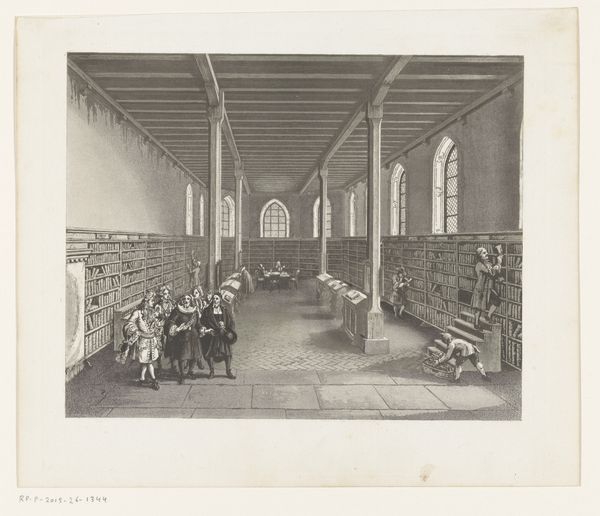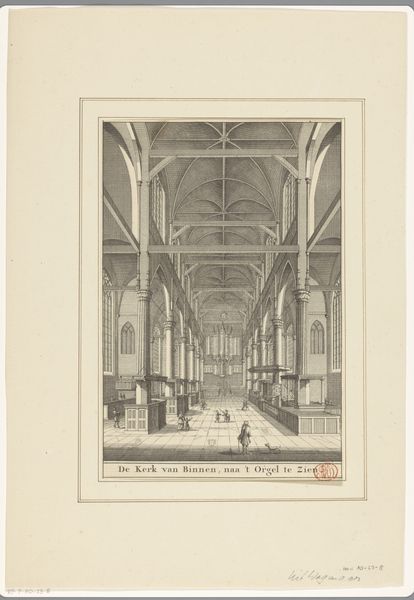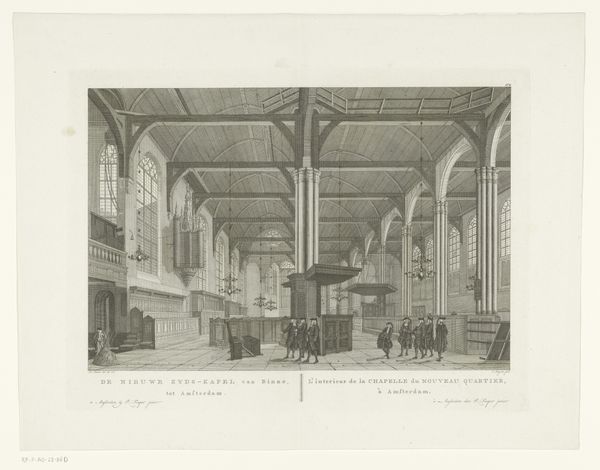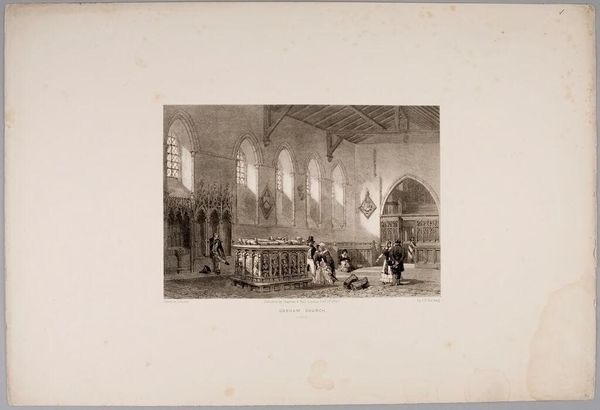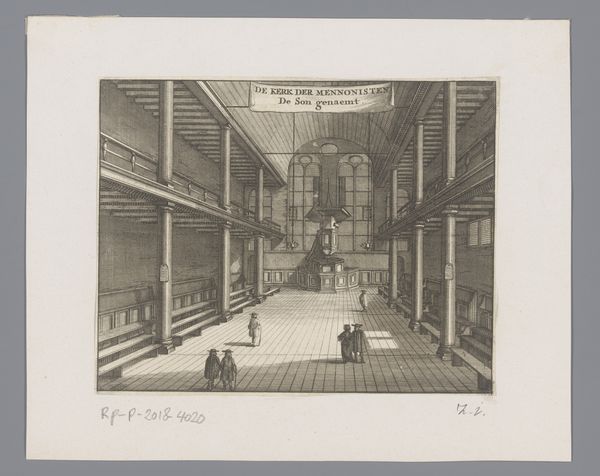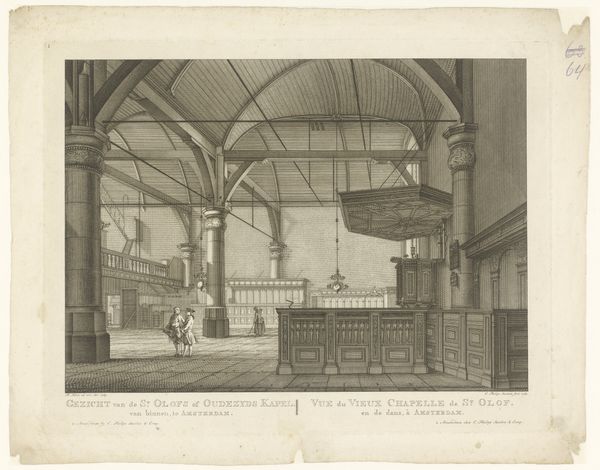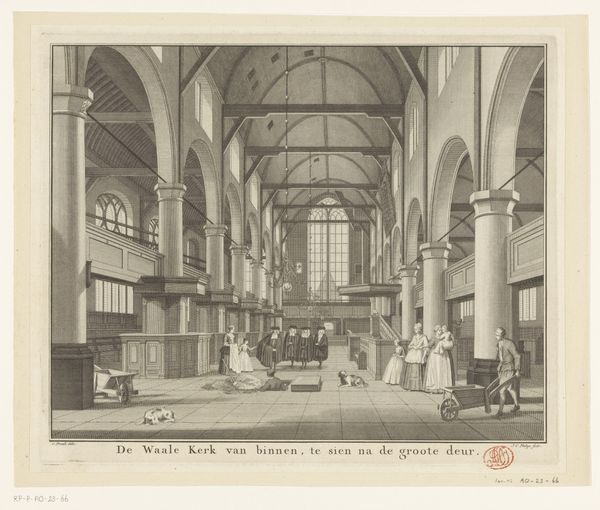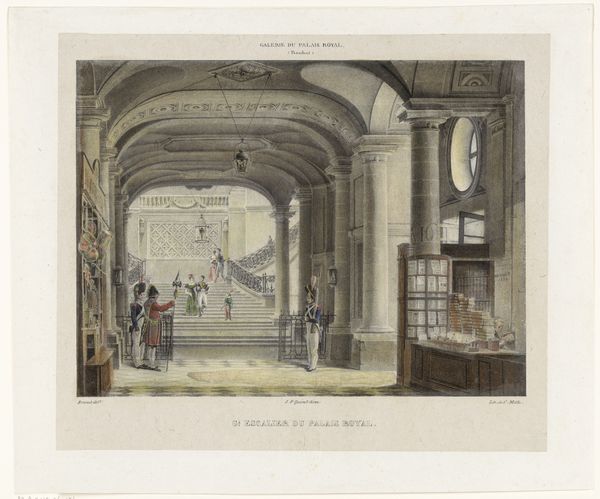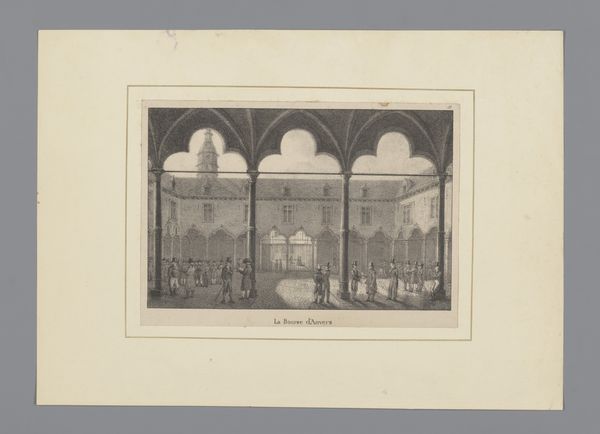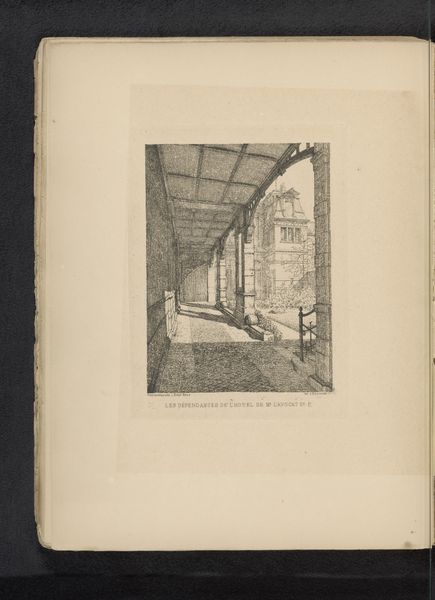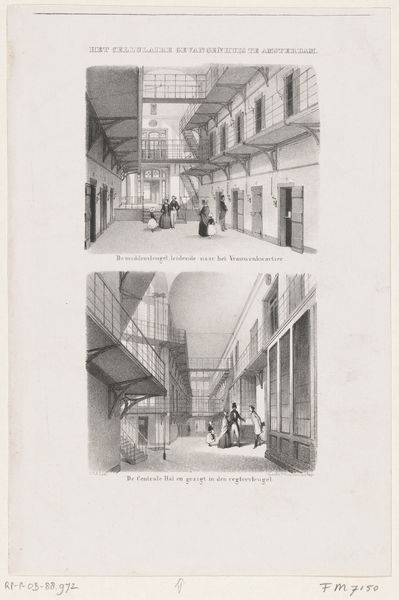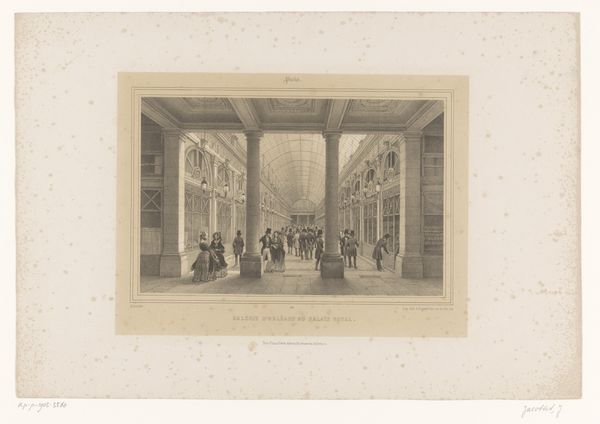
Interieur van de Friese Doopsgezinde kerk 'de Arke Noach' te Amsterdam c. 1752 - 1789
0:00
0:00
print, paper, engraving
#
dutch-golden-age
# print
#
perspective
#
paper
#
cityscape
#
genre-painting
#
engraving
Dimensions: height 163 mm, width 223 mm
Copyright: Rijks Museum: Open Domain
Curator: Here we have a print dating from approximately 1752 to 1789. It's by Caspar Jacobsz Philips, and it's titled "Interieur van de Friese Doopsgezinde kerk 'de Arke Noach' te Amsterdam" or, in English, "Interior of the Frisian Mennonite Church 'Noah's Ark' in Amsterdam." It’s currently housed at the Rijksmuseum. Editor: It’s so austere! Almost oppressively serene. The subdued lighting makes the space feel vast, but also…empty? What did you say the artist’s name was? Curator: Caspar Jacobsz Philips. The print is an engraving on paper, and you’re right; the use of perspective is remarkable, drawing your eye deep into the architectural space. I think the limited color palette amplifies that sense of austere Dutch Protestantism. Consider the labor involved in creating such a detailed interior view using the engraving process at this time. It’s meticulous. Editor: Absolutely, you can almost feel the engraver's hand, carefully etching those lines. It feels very controlled and precise, almost like a technical drawing, but softened by the figures near the foreground who almost seem surprised by their own presence within this imposing grid. It's a glimpse into another time and place, right? What do we know about this specific church? Curator: “De Arke Noach,” Noah’s Ark, was indeed a real Mennonite church in Amsterdam. Images like these were popular in the Dutch Golden Age, a period when the mercantile class asserted its prominence, partly through architectural display. Editor: It’s funny, because knowing it's called Noah’s Ark gives the image this submerged quality, that combined with all those windows makes it feel somehow fluid, as though you're both inside and also contained, or possibly adrift... Maybe that’s the point? To convey a sense of spiritual protection? Curator: Perhaps! The artist’s emphasis on clean lines, light, and overall spatial representation of civic architecture reveals the material aspirations and aesthetic values of Dutch society in the 18th Century. I think Philips captured something enduring in this work. Editor: I agree. This piece is more than just a pretty interior shot of a building. It really does speak volumes about faith and perspective and, the almost mathematical desire for an absolute sense of space and place in the world, not to mention the labor necessary to make that tangible for the every viewer. It's captivating.
Comments
No comments
Be the first to comment and join the conversation on the ultimate creative platform.

